20 ways to make vet visits less stressful
Vet visits don’t have to be a nightmare – discover 20 easy, expert-backed tips to help your pet stay calm, happy, and stress-free every time

Most of us know the feeling, and luckily we've got a few tips for making a visit to the vet less stressful. If you’ve ever felt a little shudder before visiting the dentist or a check-up with the doctor, the concept of our pets exhibiting stress symptoms at the vet clinic should hardly be a surprise.
Vet, Dr Rebecca MacMillan, confirms that “a trip to the vets is stressful for many animals”.
“After all, you are taking them out of their comfort zone and placing them in an environment with unfamiliar sounds, smells, and people,” she explains.
“Plus, most pets have been to the vet previously, either because they needed an injection, or they had an ailment like a painful leg or a sore ear. These negative associations cement the fact that the vet is not a good place to be!”
Let’s take a look at 20 ways you can make vet visits less stressful...
How to make vet visits less stressful
Thankfully, there are many ways to make a visit to the vet less stressful. Different species – and even different animals – will find varying triggers.
Cats, who are much less likely to take car rides than dogs, may find that aspect stressful. Dogs may have issues with handling, especially being picked up and put on an examination table.
Get the best advice, tips and top tech for your beloved Pets
By gently desensitizing and familiarizing your pet with the processes, and giving them regular good experiences, they should soon find that their trip to the vet is nothing to worry about. They might even start to enjoy the adventure – there are usually plenty of treats on offer!
1. Take a familiar blanket
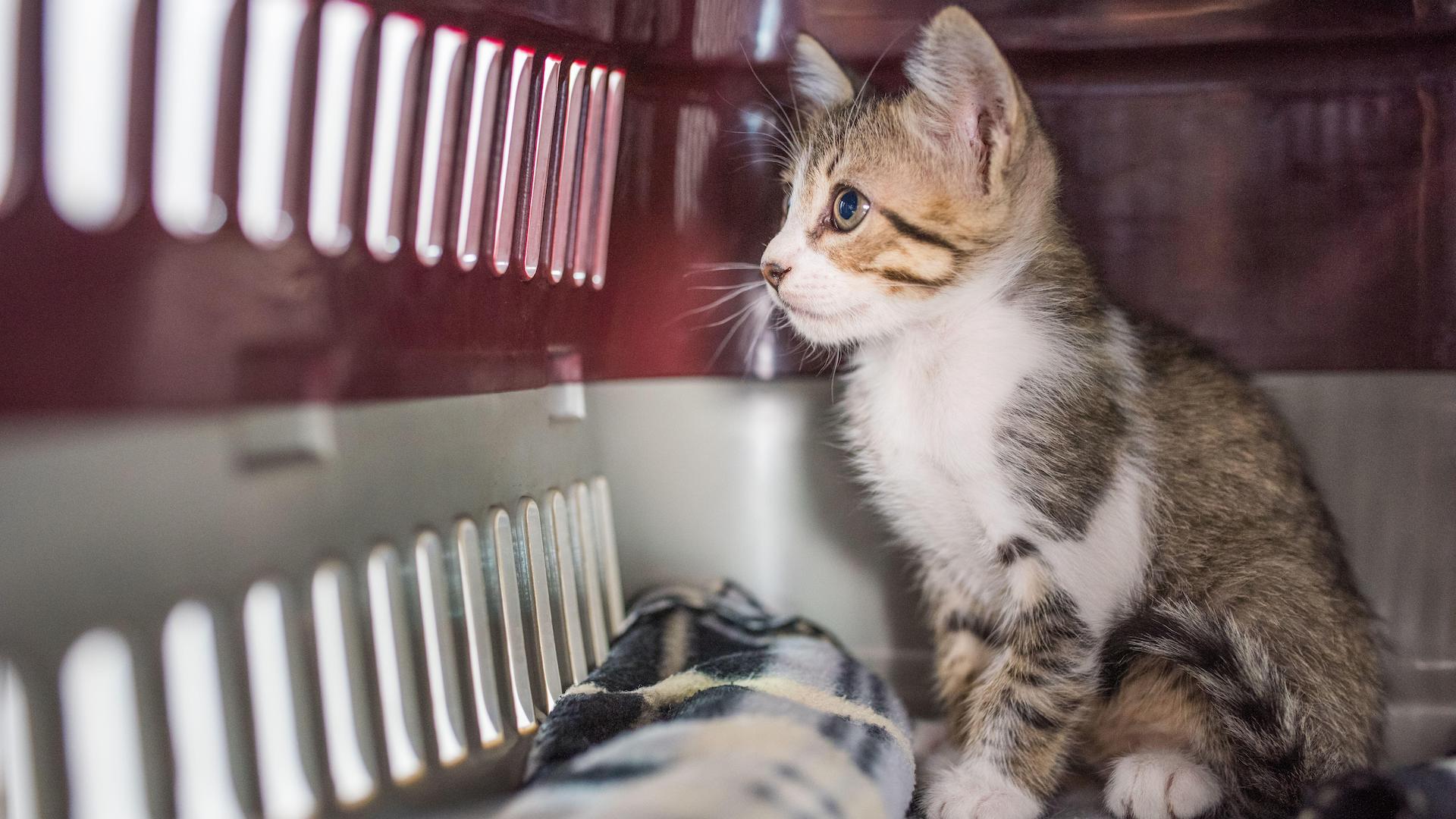
Familiar smells can be comforting for pets in high-stress situations, especially cats, who tend to get out and about less than dogs. Knowing the signs that a cat is stressed will help you to respond accordingly.
Dr MacMillan says, “For cats, it is important to consider how vulnerable and trapped they feel at the vet. To make them feel more secure, cover their carrier up in a towel or blanket, ideally one that smells familiar.”
Putting a blanket over the carrier reduces visual stimulation. Dogs also tend to find the presence and smell of a familiar, unwashed blanket comforting.
2. Pheromone spritz
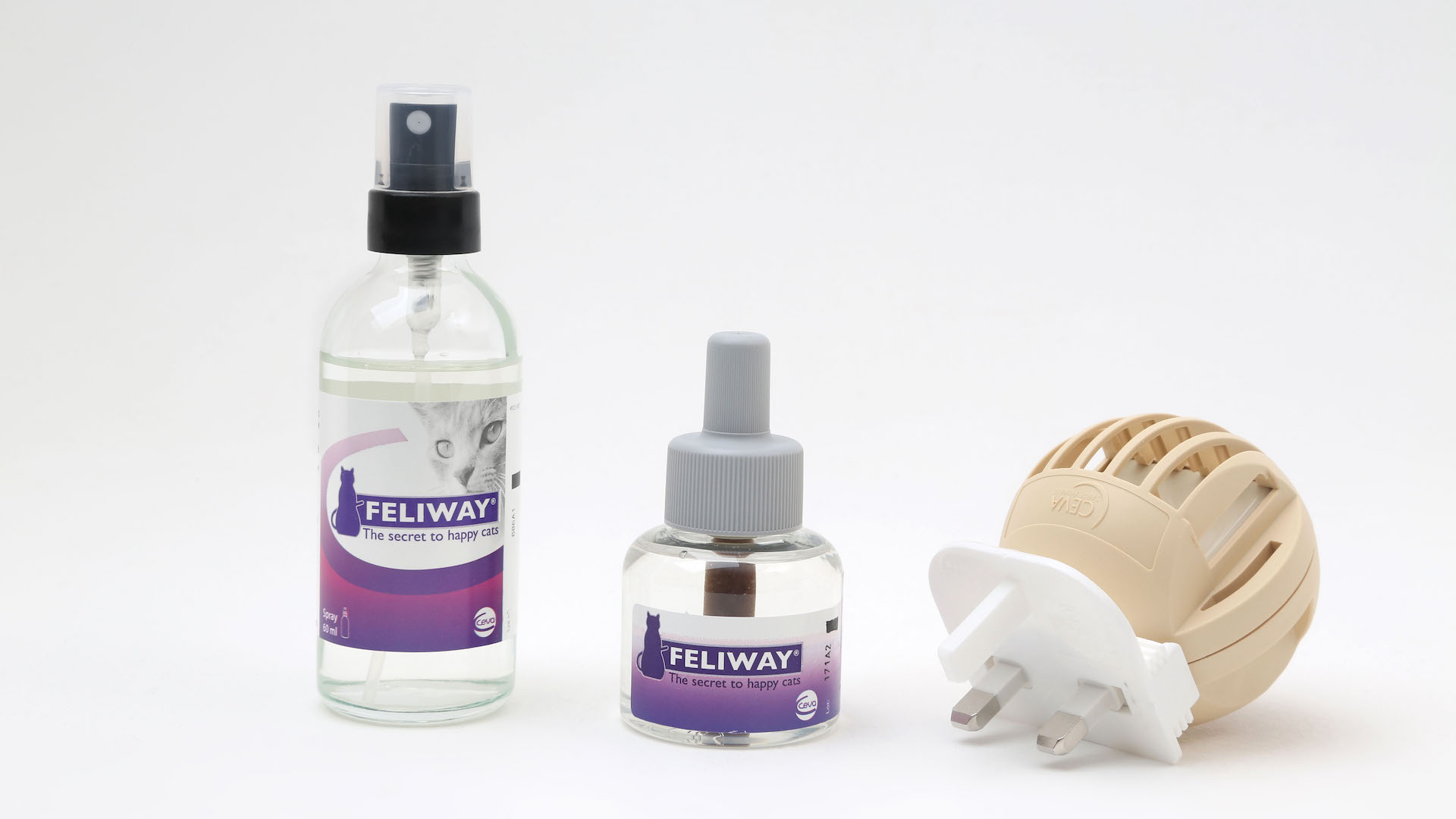
Many vet clinics will use synthetic pheromone sprays to help nervous animals, particularly cats, feel more at ease. These mimic natural facial pheromones to help reduce common signs of stress.
Dr MacMillan advises “spritzing synthetic cat pheromones into their carrier to help calm them”.
Calming pheromones are available in various formats, such as a diffuser, often used to calm pets during firework season, and sprays.
3. Use the carrier
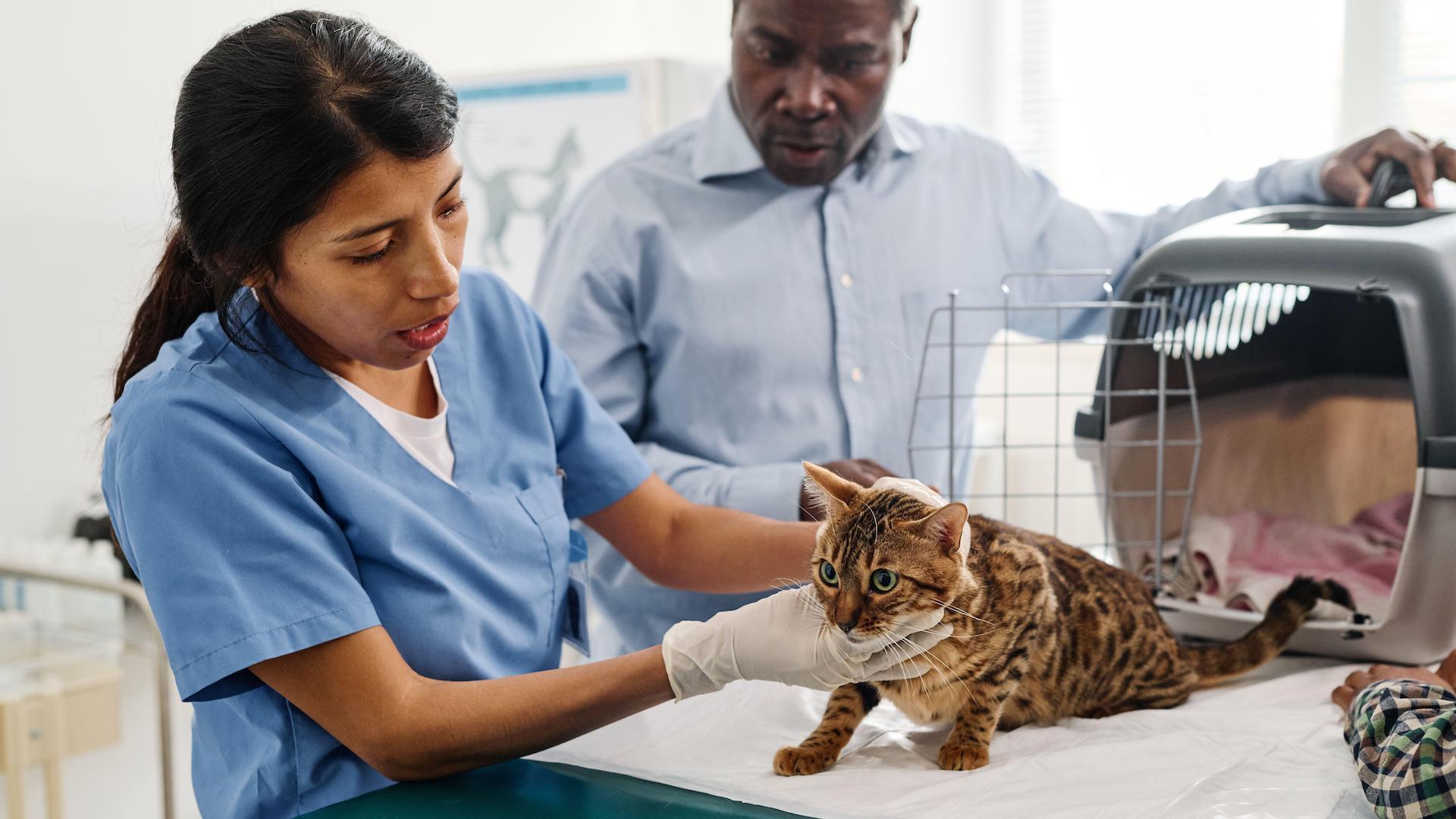
A carrier is essential for taking many pets to the vet clinic – basically any pet smaller than a dog, for example, cats, hamsters, rabbits, guinea pigs, and so on.
It’s important that your pet is familiar with the carrier, because that will be like a safe haven for them. If the first time they go in the carrier is to go to a vet with illness or injury, this will have negative associations.
Furthermore, one of the best pet carriers will keep them safe, not only while travelling but also in busy waiting rooms.
“In the waiting room, place the cat carrier up off the floor,” advises Dr MacMillan. “Many practices have ‘cat-friendly shelves’ to put your cat on while you wait, as most feel safer when they are in an elevated position.
“Never bring your cat to the vet in a harness or loose in your arms. You don’t know what other animals will be in the waiting room, or if someone will open the front door at the wrong moment, allowing your cat to escape.”
4. Short leash
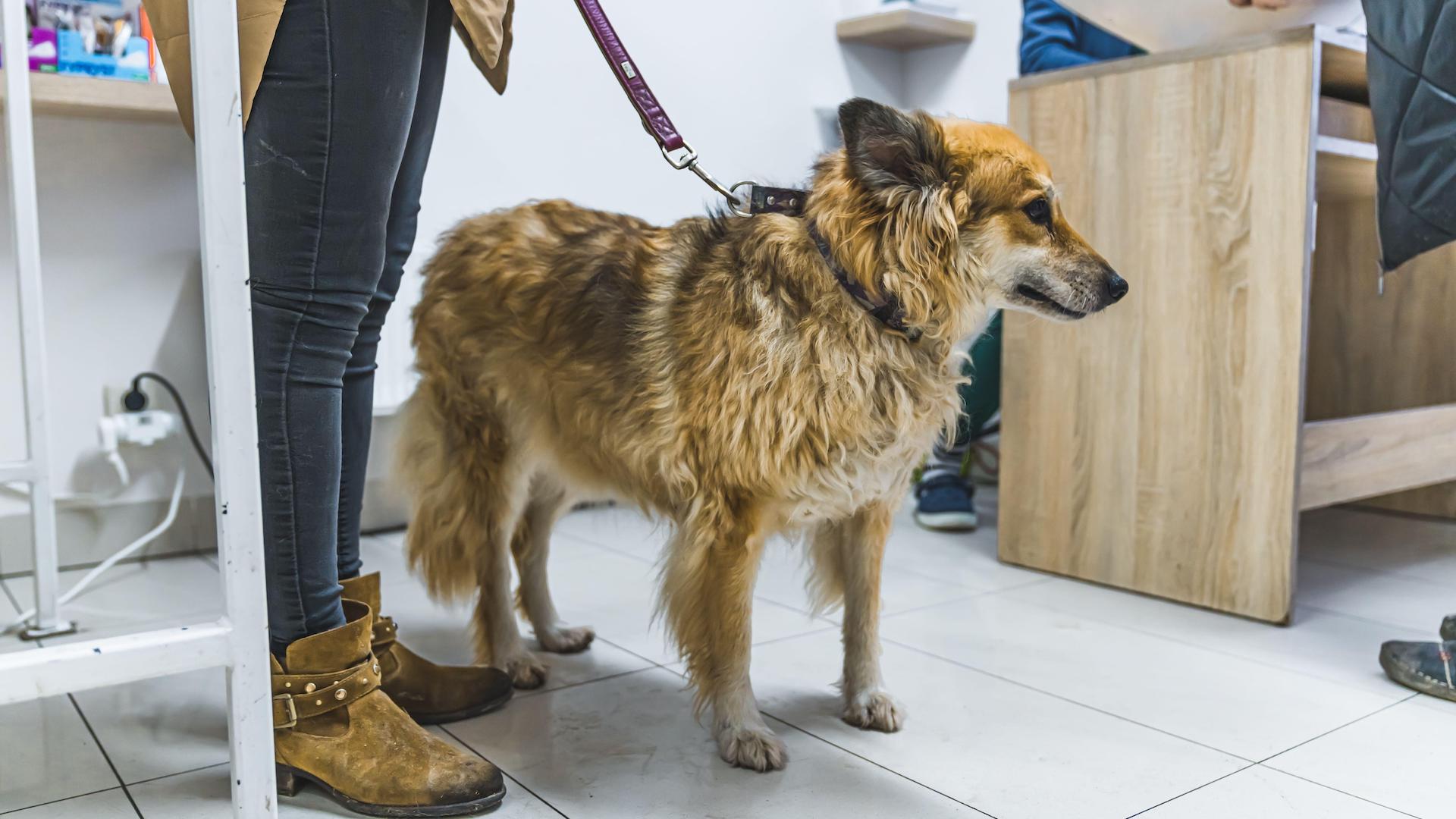
Always keep your dog on a short leash (not an extendable one) in the waiting room. This ensures you have good control, which is important for the other patients as well as preventing your dog from making a run for an open door.
While waiting, keep your dog close to you on the leash, and politely avoid interacting with other pets and their owners as they might worry or excite each other. If your dog wants to hide behind your legs or under the chair, no problem – they’re telling you that’s where they feel safe.
Smaller dogs may prefer to sit on your lap if that is something they are used to. Keep the leash on in case they are spooked and suddenly jump off.
5. Tempting treats
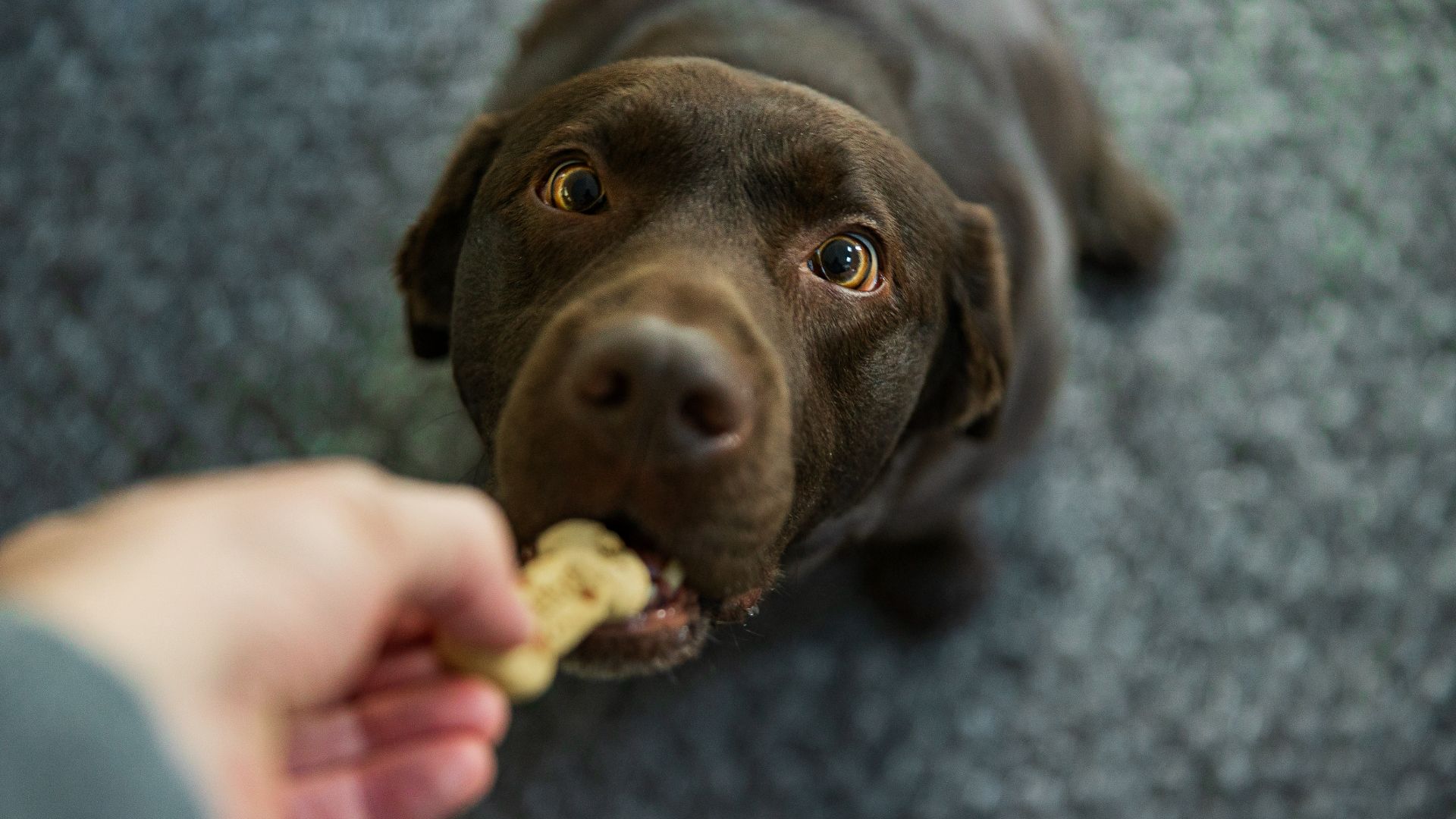
The best dog treats can help distract as well as reward – this works particularly with dogs.
Dr. MacMillan advises taking “high-value treats with you and praising any calm behavior, such as sitting nicely or politely greeting staff. This will help them to view the vets as a positive place to be.”
There are some instances when it is not appropriate to feed treats, for example, if they are having certain procedures or have an upset stomach.
6. High praise
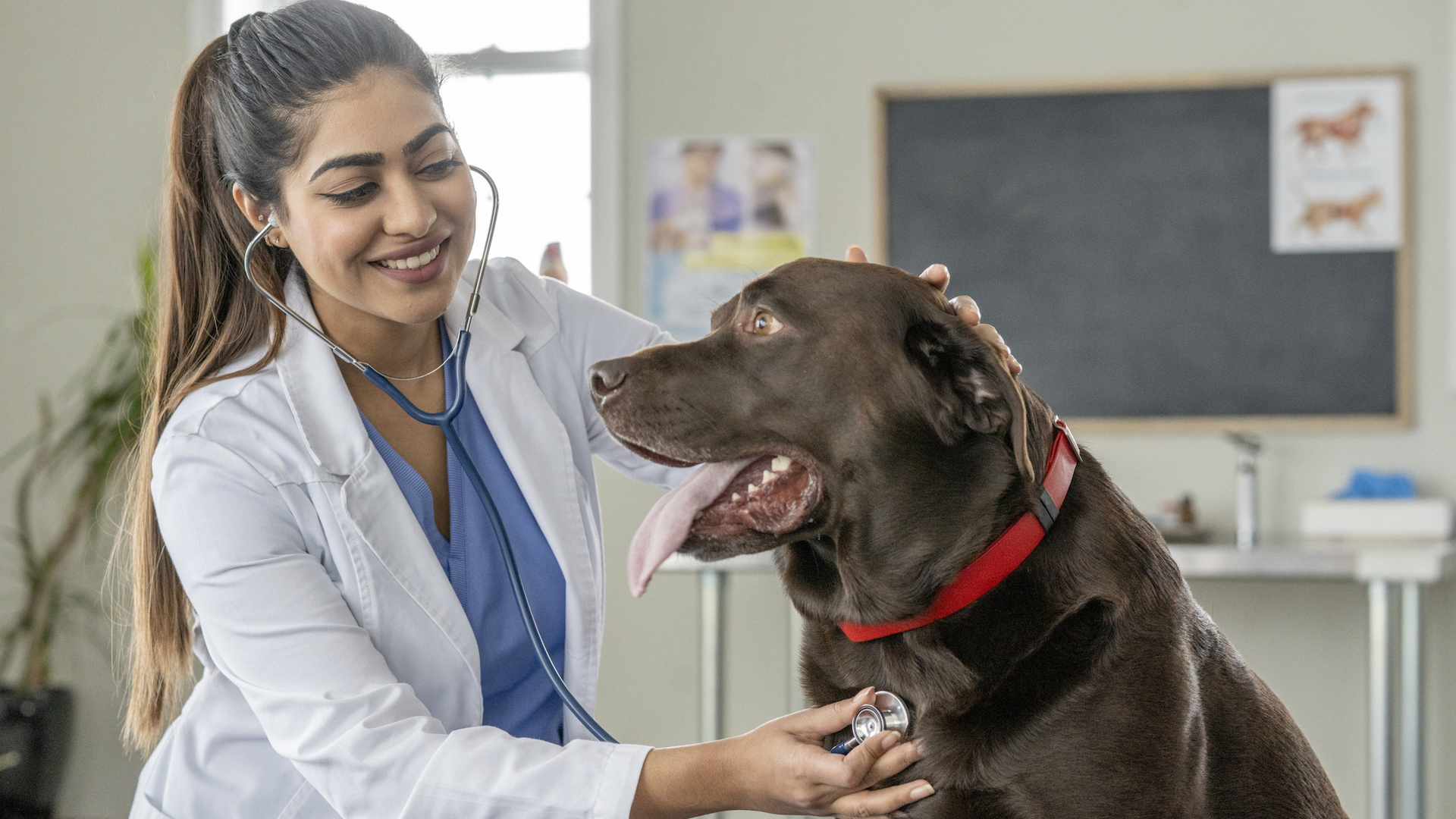
Dogs typically respond well to praise and reassurance, so keep calm and let your dog know when he is doing well. Use your voice as you normally would to tell him “good job”, encouraging him to feel that the vet clinic is a positive experience.
Remember, you know your dog best. If he enjoys a fuss, give it; but if too much praise might overexcite or stress him, then go gently.
7. Right on time
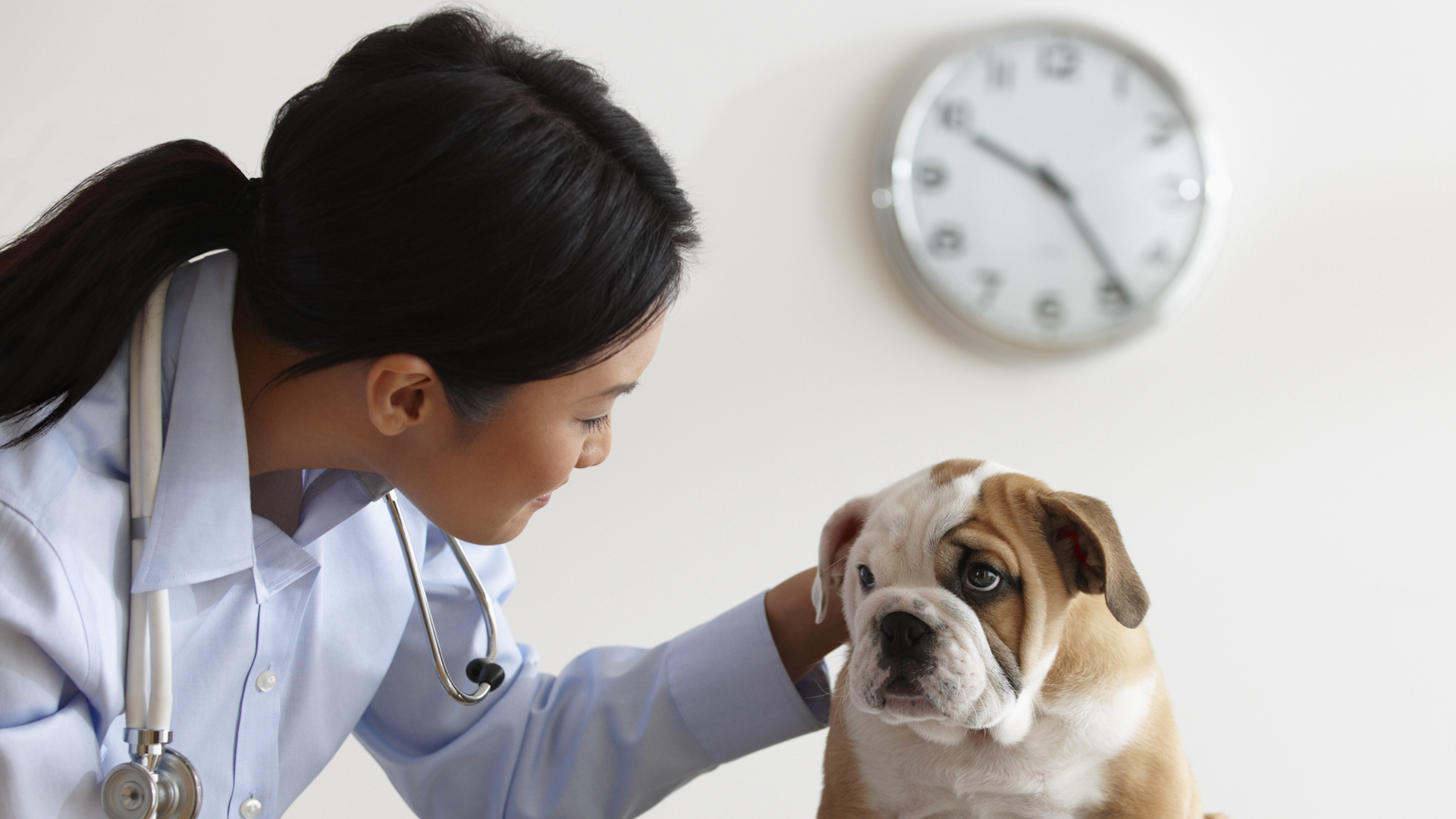
If you are one of those people who like to arrive 20 minutes early to everything, a vet visit is the moment to turn your punctuality dial down a notch.
Dr MacMillan advises: “For any animal, try not to arrive at your appointment too early, five minutes or so is fine. Otherwise, it prolongs the length of time that they have to wind themselves up in the waiting room.
“If you do arrive early, ask reception whether you can wait in the car until your appointment time.”
8. Communication is key
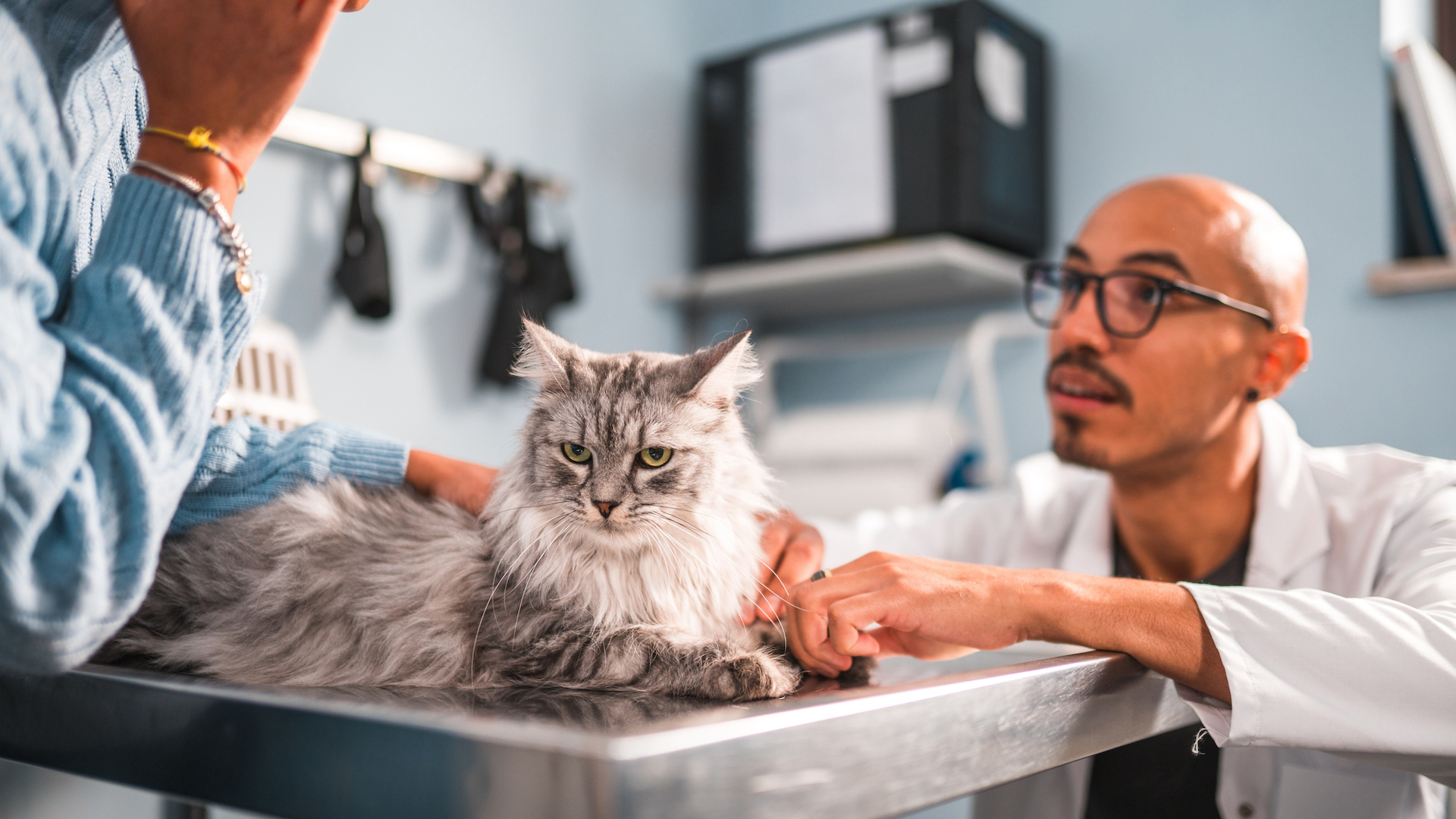
Your personal relationship with your pet is paramount. If you know that they will get stressed visiting the vet, call ahead to discuss how you will manage the situation to make it a positive experience. It might be appropriate to book an extended appointment so that you can take it slowly, with patience, going at the pet’s pace.
Some reception staff love to make a fuss of the animals as they arrive. This is all well and good if the pet enjoys it, as it can build trust, but in some animals, the reverse may be true, so it’s sensible to communicate this.
And always tell staff if your pet has had an accident. Reception staff will be used to this as it’s a common sign of nerves, and it’s really important you don’t reprimand the animal or show your frustration.
9. Consider calming medication
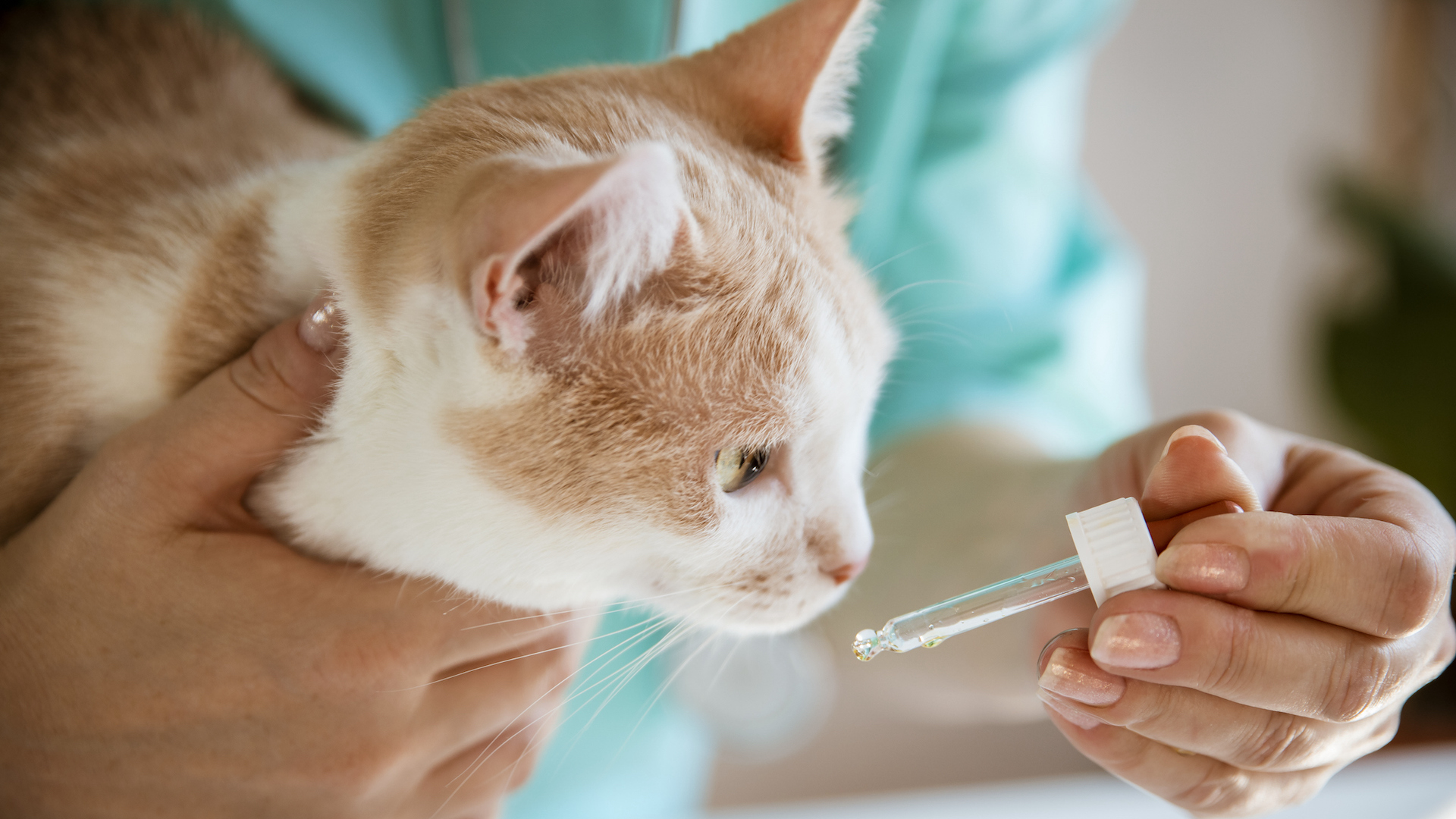
Do discuss with your vet whether calming medication would be appropriate for your pet. This might be recommended either to make a veterinary examination safer or to inhibit your pet’s memory of an uncomfortable visit.
Vets will advise on this, as Dr MacMillan says: “If your cat or dog is particularly anxious or difficult to handle, then speak to your vet about medication options. Drugs can be useful to help calm your pet and can make the experience more pleasant for everyone.”
10. Request a quiet time
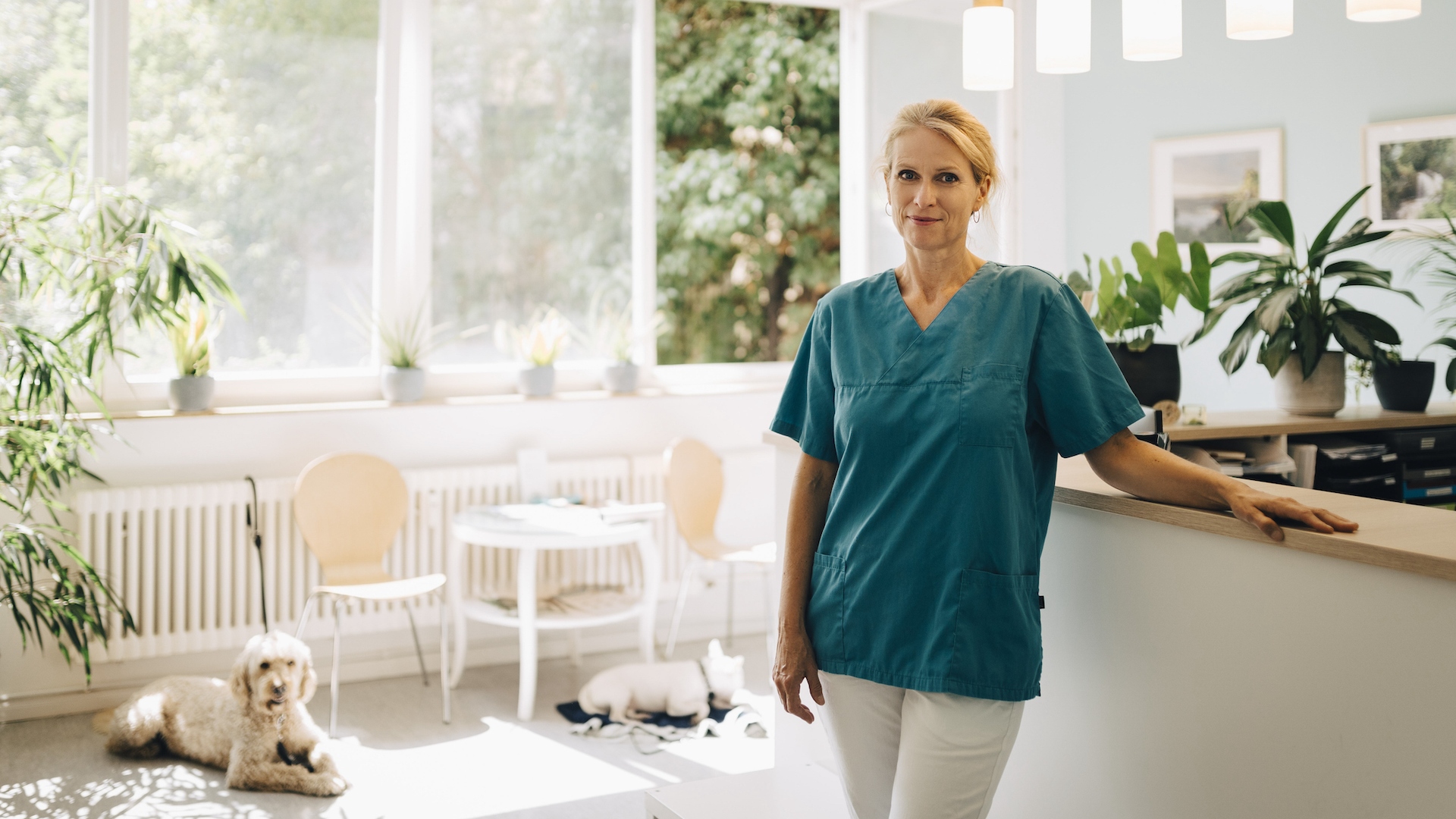
For many pets, it’s all the hustle and bustle of the waiting room, dealing with other animals, of varying species – noise, barking, whining, and so on- that really stresses them out.
If your pet is particularly sensitive to a busy clinic, with people and animals rushing to and fro, call reception and request a quiet time of day for your appointment. This will enable them to settle better, and the vet will be able to take their time to make the experience a positive one.
11. Feeding time
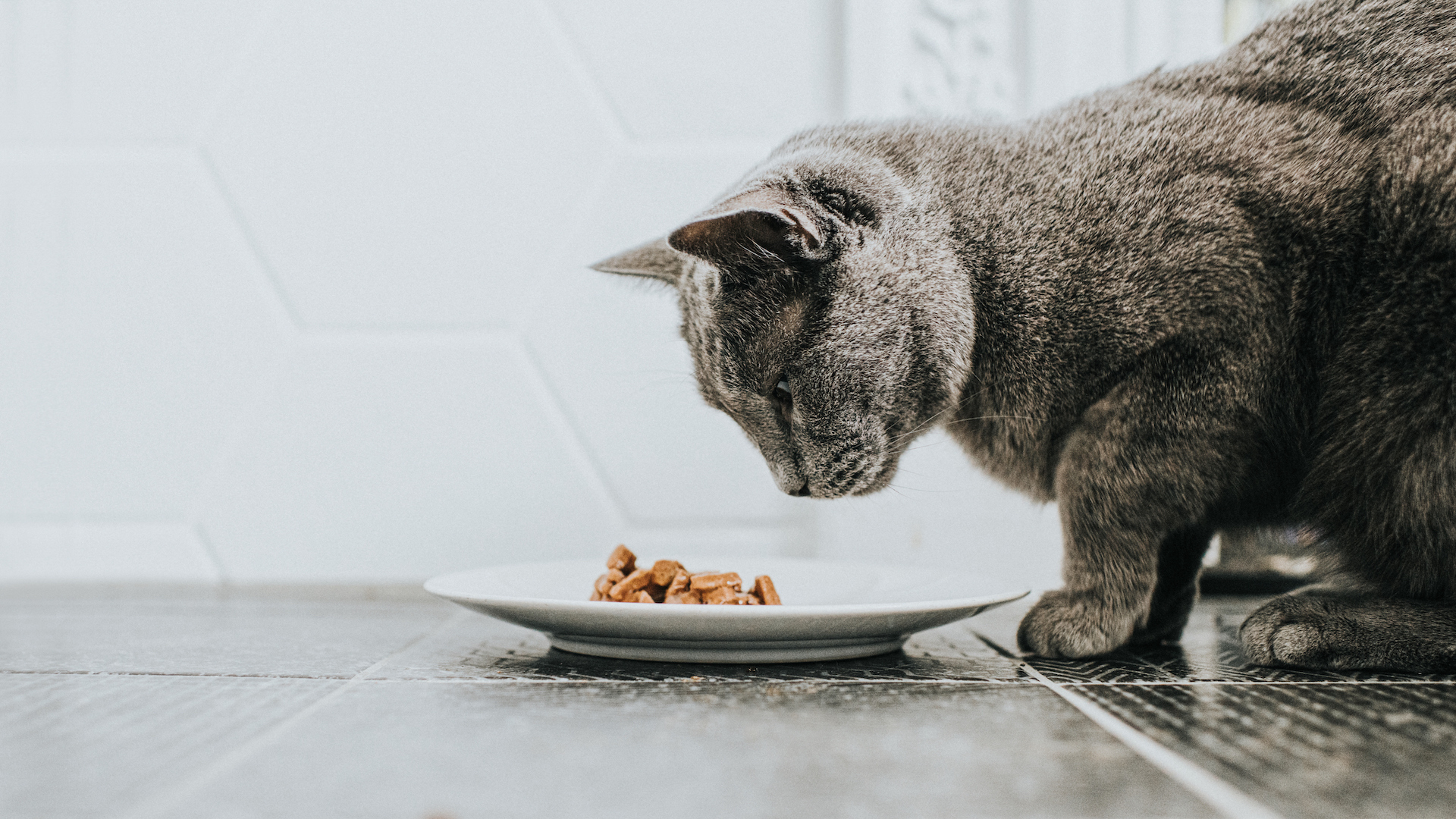
You’ll need to time your pet’s meals to help make a visit to the vet less stressful. Unless your vet advises otherwise, it’s best not to feed them just before getting in the car, as this could increase the risk of travel sickness, as well as cats toileting in the carrier.
For certain procedures, your pet may need to fast – sometimes withdrawing water for a period as well – which your vet should instruct you in advance.
12. Stay calm
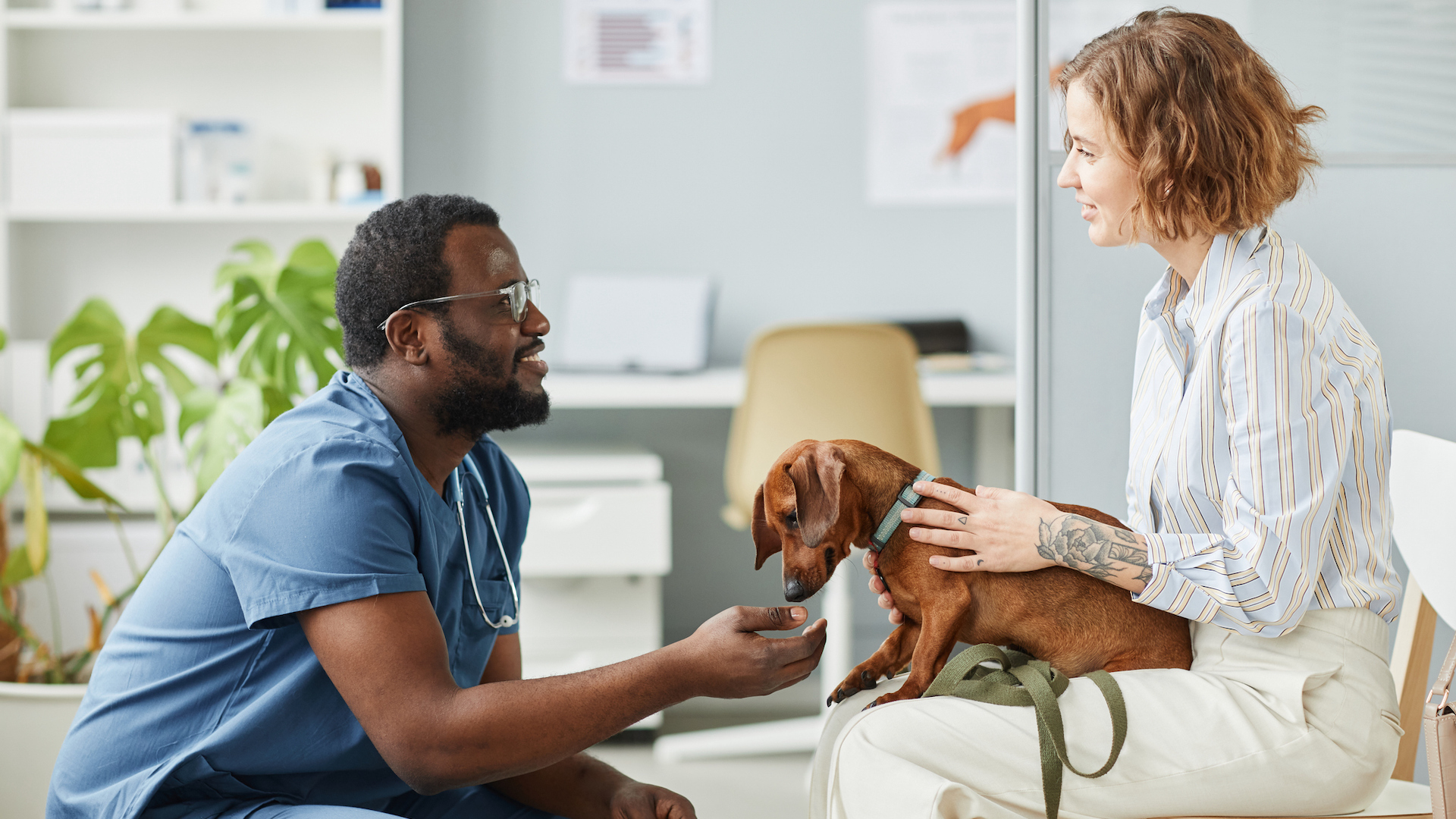
We know our pets pick up on our moods, so try to keep as calm and composed as you can, as this will help your pet to relax. Give yourself plenty of time around the vet appointment, so that you are not rushed or impatient.
Your calmness shows your animal that you can cope with this environment, and they will follow your lead. Breathe deeply and let go of any tension!
13. Prepare questions in advance

You’ll want your vet visit to be as smooth and quick as possible, so prepare any questions in advance, writing them down if that helps, and ask the priority ones first. You don’t want to be lingering unnecessarily, exacerbating stress levels. If your animal is getting stressed, you can leave the less urgent questions for later, over the phone.
14. Familiarity and regularity
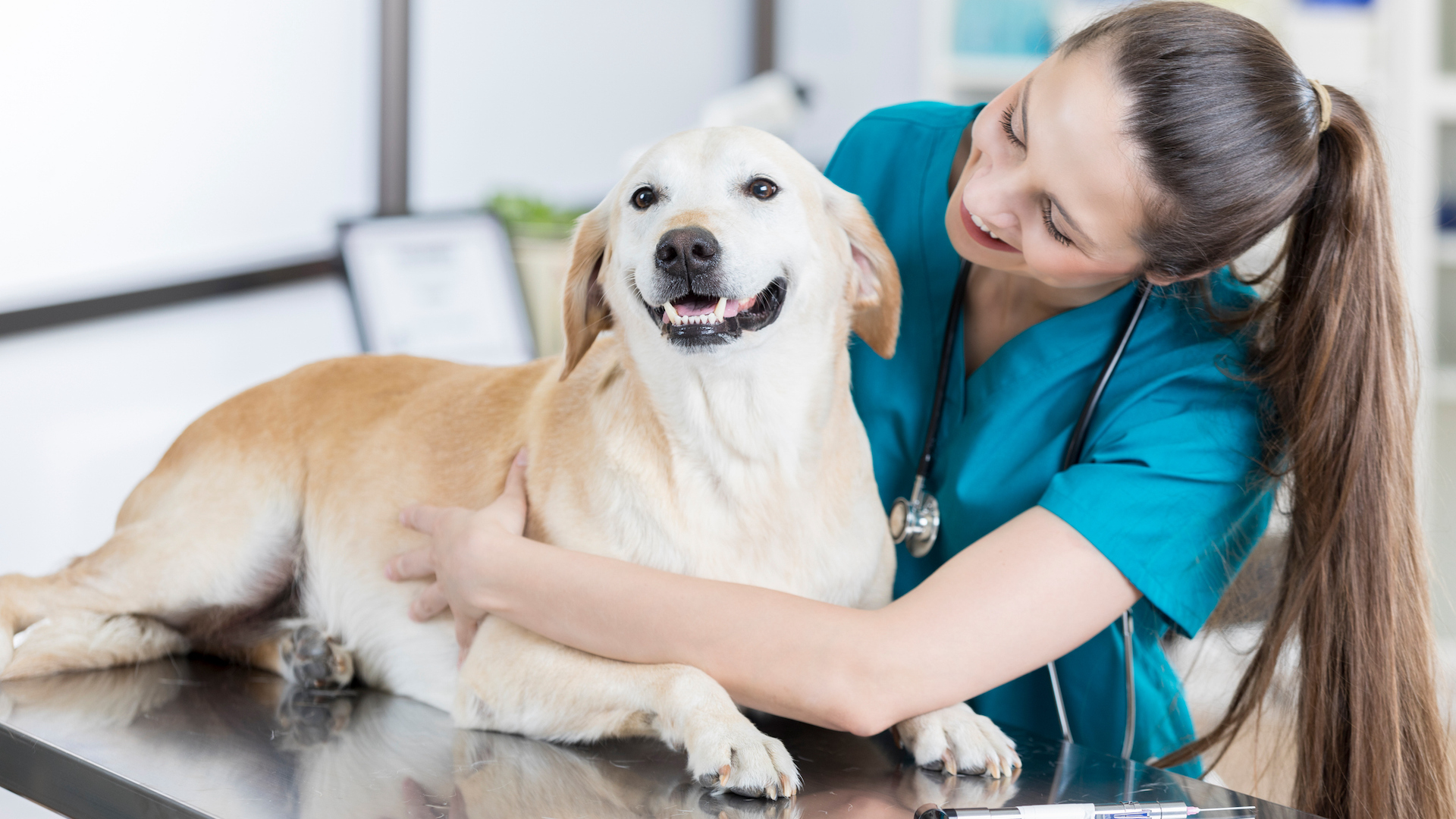
Regular, low-key visits to the vet can help build familiarity without stress. If the only time a pet goes to the vet is for a vaccination, when he’s sick or injured, it will be associated with negative experiences.
Many practices are happy for you to take your pet in for regular weight or health checks, which will provide a pain-free, straightforward experience. Even just pop into the waiting room for a minute or two if you’re passing, and then carry on. Make everything about the trip enjoyable, with reassuring praise, high-value treats, and a smooth experience to build a confident and relaxed foundation.
“Some owners will bring nervous dogs to the vets for regular socialization visits,” says Dr. MacMillan. “That way, a trip to the vet doesn’t always result in an injection or a painful physical exam, and it allows the dog time to explore the environment.”
15. Practice at home
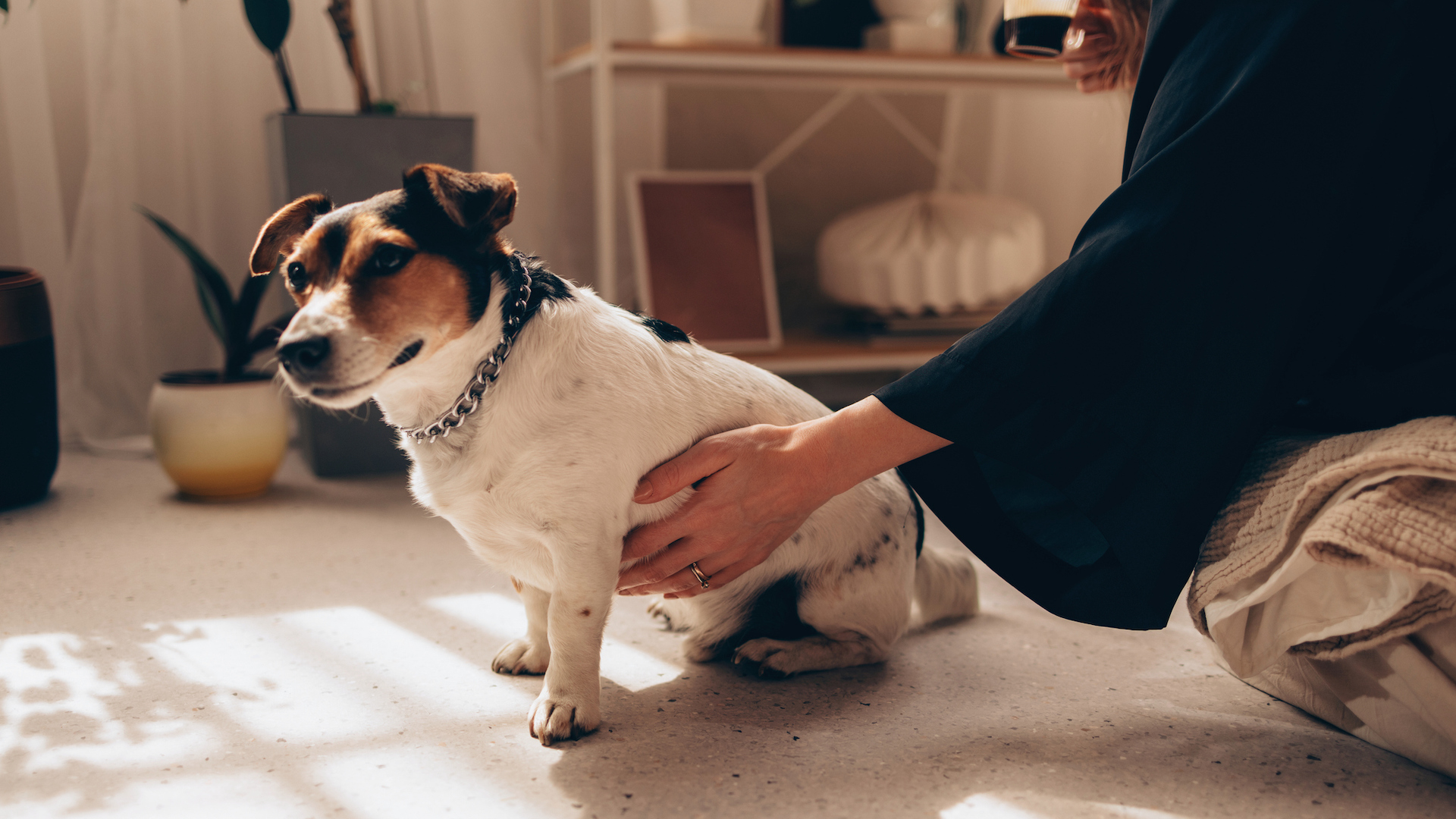
At home, spend time practicing handling your pet in the way the vet will. If you have your pet from a puppy or kitten, start young. You should be able to touch your pet all over its body, with it staying calm and unperturbed.
Practice also examining his teeth and eyes – you can even use simple words like “eyes” or “teeth” so that he learns to associate them with what you’re about to do.
Even if your dog is gentle and unfazed by the handling, it’s a good idea to train him to wear a muzzle for short periods, as some vets will use them on occasion. If the only time a muzzle is used is when the dog is already in pain or scared, this again causes negative associations.
16. Table time
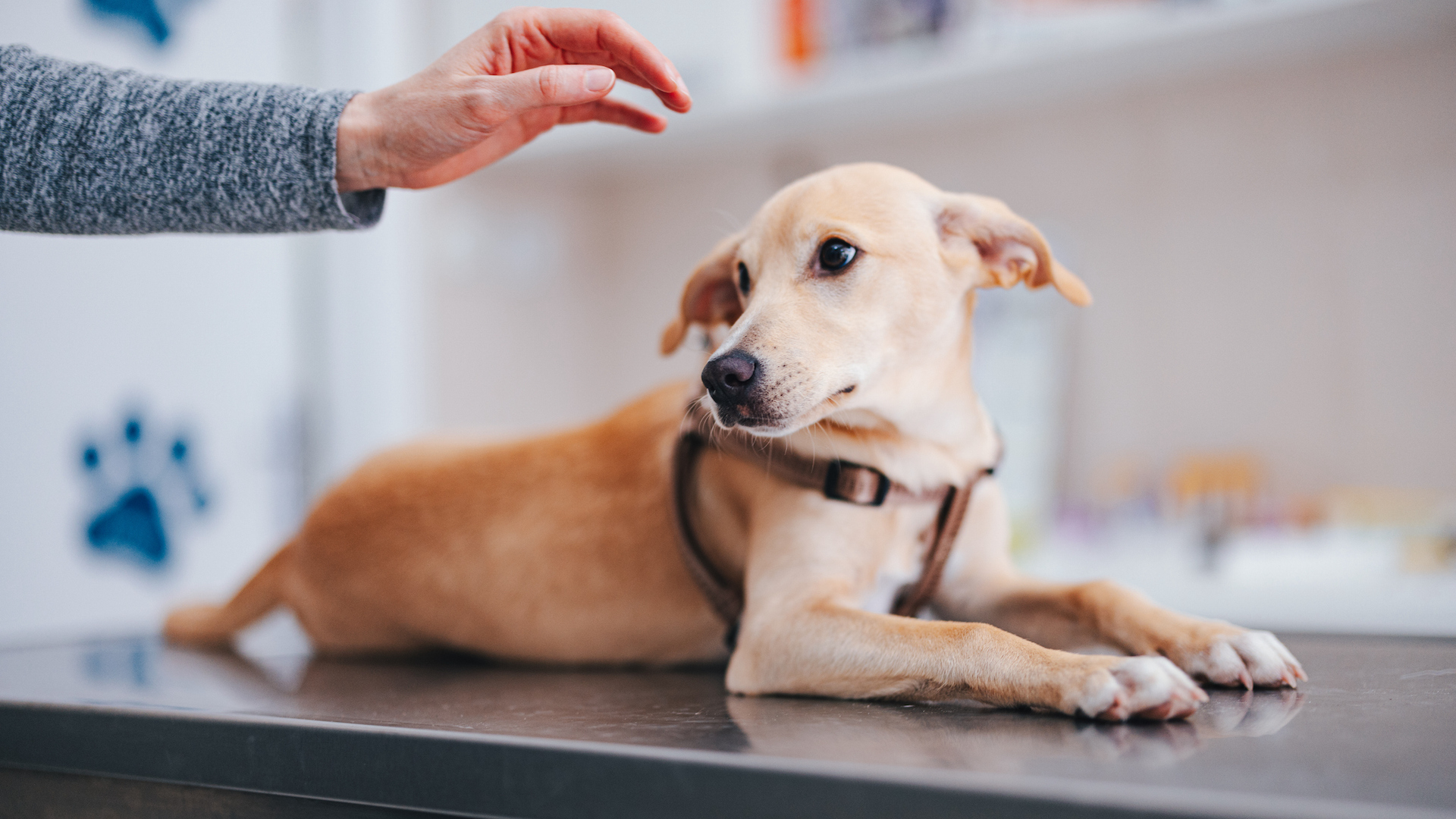
Many dogs, particularly medium-sized breeds and large breed dogs, are very rarely picked up. Suddenly, the vet requires them to be picked up and put on a consultation table for examination and they can find this very disorientating and scary, in an unfamiliar place with a strange human poking and prodding them (or so they may think!). Normally, they’d be reprimanded for sitting on a table!
It’s worth teaching your dog that he can trust you to pick him up, as well as practicing this manoeuvre yourself. Consider taking a familiar mat for them to sit on, so that they feel less uneasy.
17. Car rides for fun
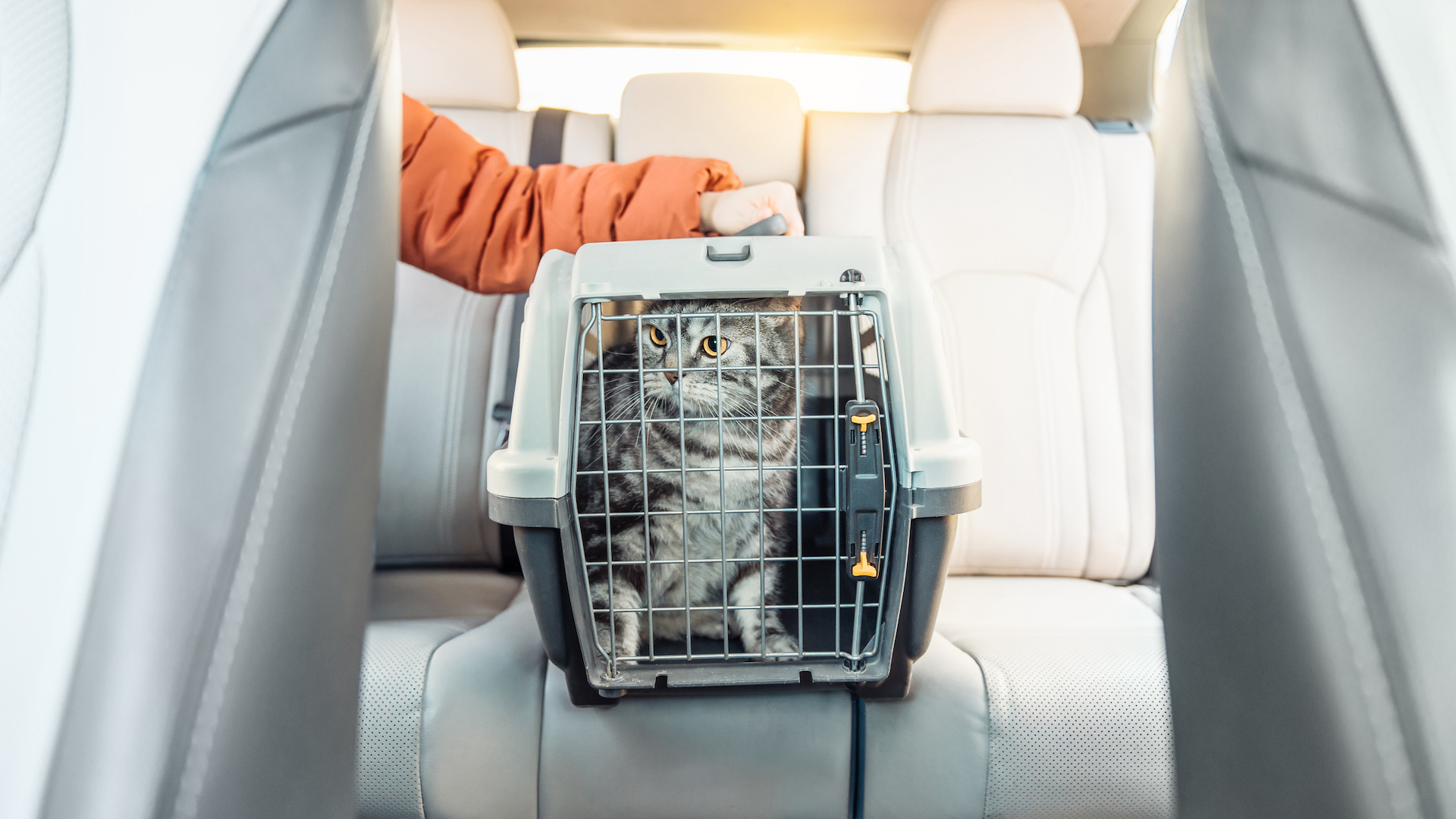
While dogs often associate car rides with going on walks and spending time with their family, crucially, not being left behind, cats rarely travel. Get your cat used to the carrier, leaving it open in the home.
Take your cat for short rides, returning home afterwards. It’s important that a car trip is not always associated with a trip to the vet if that is something they already find stressful.
Always drive super-smoothly, keeping the car cool and comfortable, and avoiding travelling on hot days.
18. Specialist help
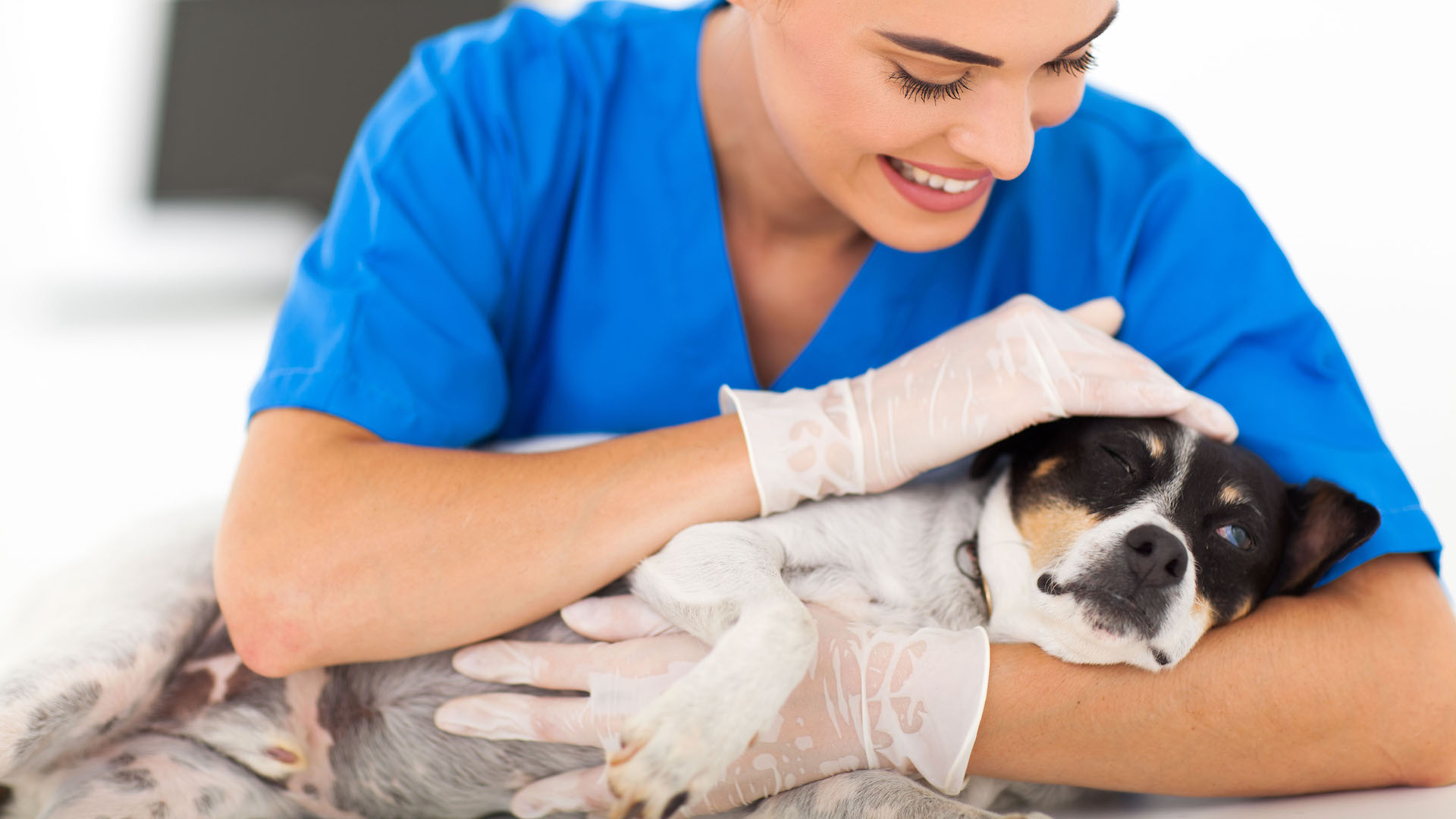
Most vets will do their very best to make your pet feel as comfortable and relaxed as possible. However, if you know you have a particularly stressed animal, you may want double reassurance that the vet is a specialist in dealing with fearful pets.
The Fear Free program, which is gaining traction in the veterinary world, aims to recognize and reduce fear, anxiety, and stress associated with visits to the vet, working with the pet, owner, and veterinary team. Some veterinary practices are certified “Fear Free” or will have a professional trained in specific techniques.
19. Avoid additional stressors
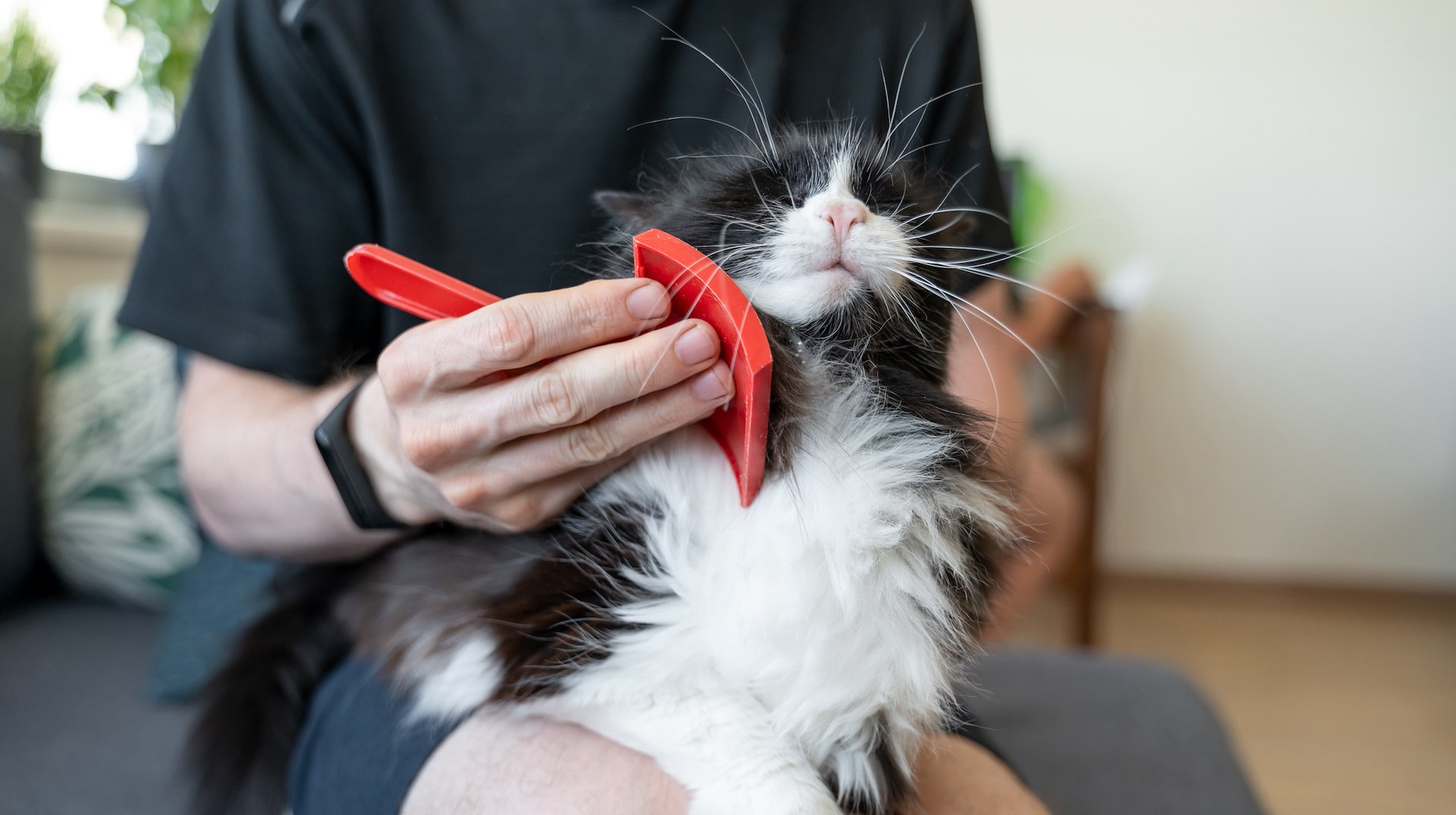
You want your pet to head to the vet in as calm and relaxed a mood as possible. So before you go, avoid any activities that might cause him stress, such as grooming or bathing.
For dogs, while a training session might cause unwanted stress if things don’t go entirely to plan, a gentle walk, presuming they’re fit and well, before visiting the vet could be helpful in releasing pent-up energy.
20. And relax...
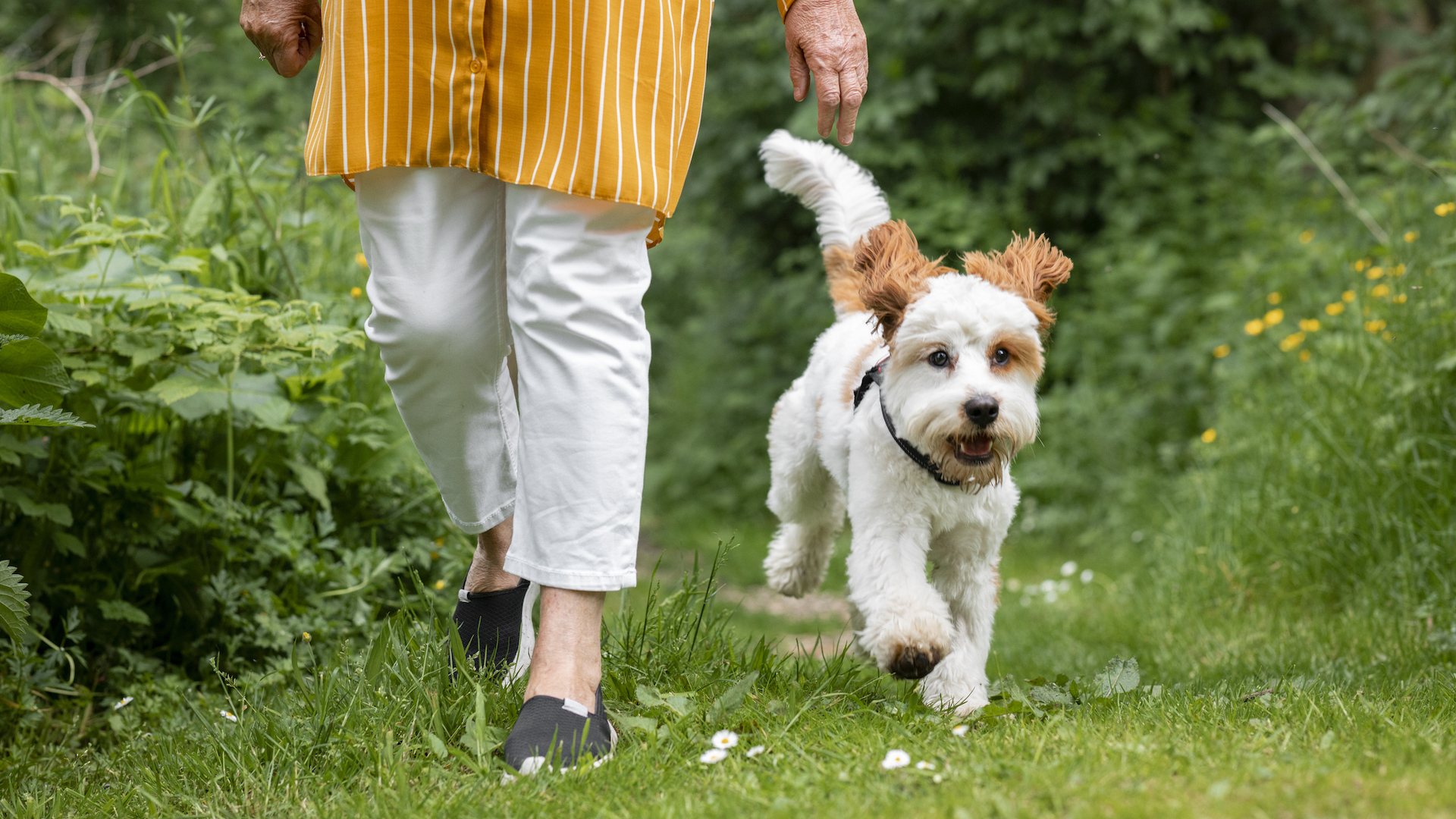
After you have returned home from the vet, whatever the experience, it’s important to let your pet relax. If appropriate, take your dog for a gentle walk to release tension.
Let your cat sleep and rest, giving them time to decompress. Get back into their normal routine as smoothly as possible.
And while they are chilling out, note down what worked and what didn’t for future visits.
Read next: 7 dog car safety tips and how to keep a cat calm at the vet
Martha is an experienced journalist working in both print and digital media. She specializes in the canine, equine and rural sphere where she has covered a wide range of topics from cloning animals and the ingredients for a perfect yard dog, to helping owners find the best canine GPS trackers on the market. When she’s not busy writing about dogs and horses, she’ll be found either aboard a horse or looking after the menagerie of pets in her care.
